Fewer Americans see climate change as very serious problem: Survey
Reply

by Examined
Community (This content is not subject to review by Daily Kos staff prior to publication.)
Monday, May 06, 2024 at 5:20:08a PDT
18 NEWRecommend Story22Share

In this post I’m going to provide a primary care heads up about H5N1 bird flu, speculate about where this may be headed, and finally throw some shade on all Republican and a few Democratic senators who have hamstrung us while trying to score points in the mask debate.
A long simmering issue is now rising to the level of primary care interest. Bird flu is increasingly spilling over into mammals like cows. American dairy farms are affected, and up to 20% of milk recently tested is coming up positive for the H5N1 virus. So far it looks like it is not contagious as long as it’s pasteurized.
https://imasdk.googleapis.com/js/core/bridge3.640.0_en.html#goog_1760665287
about:blank
Skip Ad
I have a feeling this particular H5N1 influenza virus (clade 2.3.4.4b) which has been brewing for years now and decimating wild birds, is going to be a human thing eventually. There is ample opportunity for a virus circulating in cows to test the waters in humans and pigs. Farm conditions are often cruel, and I’ve read that cows are often fed “poultry litter” – a mix of chicken excrement, spilled feed, feathers, and other waste scraped from the floors of industrial chicken and turkey plants. Makes me want to be a vegetarian for many reasons. Pigs are a stepping stone to humans, so if we hear of H5N1 spreading in pigs it will be time for even greater concern. But I am not freaking out yet. From what I’ve read and the experts I listen to, it’s probably not an imminent thing, circulating as it has been through dairy cows for the past 4-5 months without a significant spillover into humans, and having first been detected all the way back in 1996.
Understandably, people are not prepared for another pandemic. Psychologically or physically. Doctors are not either. Yet I’m cautiously optimistic as a family doc who might yet be drafted into another round of service. The purported utility of Tamiflu/oseltamivir as an antiviral against this H5N1, the candidate H5N1 flu vaccines we already have in hand, the improved infrastructure to dial up new mRNA vaccines via Pfizer/Moderna and nanoparticle vaccines via Novavax, the ubiquity of respirators and PPE compared to 2020 should we need them, the much better understanding of ventilation and infectious respiratory particle continuums versus dichotomies, old fashioned hand washing and no shortage of soap, cows sick with H5N1 having mostly non-severe diarrheal illness and not reportedly dying en masse, the “mild” human case in the Texas dairy farmer just described in the New England Journal of Medicine – all combine to keep me sane, vigilant, and patient with the science.
Here is an aside about the case report from the NEJM. It seems this dairy worker served up his diagnosis to doctors quite responsibly with full disclosure of contact with sick cows. Usually if you listen to patients, and then ask a few questions, they will lead you to their diagnosis. The dairy worker was treated with Tamiflu. He mostly had a wicked case of conjunctivitis without much respiratory tract involvement:

I also like that his household contacts were given a 10 day course of Tamiflu to prevent illness. This prophylaxis works about 90% of the time to prevent transmission of regular human influenza, though it might not have mattered here because this bird flu does not yet have the tools for sustained human to human transmission. Technically, the virus we are gaming out doesn’t exist yet. It’s a handful of future mutations away. Still, I’ll take this case report.
But I do worry about those sources citing 52% human mortality rates in the 900+ people who have sporadically contracted some version of H5N1 bird flu since it was first discovered in 1996. Yet it is highly likely that this is an overestimation and many cases have not been identified. But even a 5% mortality rate would be disastrous. I worry about how birds, poultry, and sea mammals like elephant seals and sea lions suffer incredibly high mortality rates up to 90%.
I won’t eat unpasteurized dairy products like milk and cheese. I usually try not to anyway, except for some insanely good cheese every once in a while from DiBruno Brothers in the Italian Market of Philly where Rocky trains.
Pasteurize at will. Lawmakers should ban unpasteurized dairy for a while instead of scoring points arguing about masks. See below.
If Mr. Bluebird lands on my shoulder, I will calmly brush him away and then wash my hands. I won’t handle dead birds, or if I do it will be with major caution.
I’ll get a vaccine if this takes off (assuming I’m offered one as a front line health care worker). The CDC has been testing existing H5N1 vaccines in ferrets, and has found that vaccination appears to offer cross-protection against the virus from the man who was infected in Texas. They are also looking at people who received a previous H5N1 vaccination (not a regular flu shot that we can get) and so far encouraging results for theoretical protection.
If this takes off our regular flu shots won’t help much, so we’ll need an H5N1 specific shot. Will you be able to get one?
Here are 5 key points from an article written by rockstar Helen Branswell of STAT news:
And last but not least it bears mentioning that our political chickens may yet come home to roost. Please consider the following not as a red/blue reader, but rather as a nonpartisan reader who genuinely cares about the societal implications of each government step into scientific and public health realms.
Recall that red senators, and a handful of blue senators, joined hands in an act of public health malpractice to ban any federal mask mandates on passenger airlines, commuter rail, rapid transit buses, and any other transportation program funded through the 2024 fiscal year (ending 10/1/2024) regardless of the situation. Such political posturing, and the conflation of a public health tool with a means of oppression, really hamstring our ability to contain what could become a more severe pandemic than the one we just experienced. Feel free to let your Senator know that they are playing with fire, not just with this bird flu possibility, but also with any future Covid variant that might evolve, and that masks do work when we need them (1, 2).
Also feel free to contact Senator Ted Cruz, who introduced an even more severe bill called the “No Mask Mandates Act of 2023.” This act would:
Senator Cruz is from Texas, the apparent epicenter of the current dairy cow problems.
Keep an eye and ear on this bird flu.
Don’t consume unpasteurized dairy.
Don’t worry just yet.
Allow scientists and public health to keep doing their thing!
~
I hope this was helpful. At the very least it provided an opportunity to craft an article title with a memorable throughline. Please add your preferred email to this list on Examined to directly receive actionable updates on flu, Covid, prevention, and other vital primary care topics from me. Have a great week 💪
*
[This post originally published on Examined here.]
https://imasdk.googleapis.com/js/core/bridge3.640.0_en.html#goog_1086615150

CTVNews.ca Digital Content Editor
Published May 6, 2024 8:01 a.m. PDT
Share
H5N1 or avian flu is decimating wildlife around the world and is now spreading among cattle in the United States(opens in a new tab), sparking concerns about “pandemic potential”(opens in a new tab) for humans. Now a health expert is urging Canada to scale up surveillance north of the border.
“The risk grows the more mammals are infected,” Dr. Isaac Bogoch, a Toronto-based infectious disease specialist, told CTV News Channel on Sunday(opens in a new tab). “The more mammals that get infected, the more opportunities there are for this virus to mutate.”
Bogoch is urging authorities to “actively search” for the virus and implement broad-based surveillance as the risk grows in Canada because of the scale of the outbreaks south of the border.
“You know, if you don’t look you’ll never find it,” Bogoch told CTV News Channel host Renee Rodgers. ” Cast a broad net.”
Why should we be concerned?
Matthew Miller, from McMaster’s Immunology Research Centre in Hamilton, agrees with the infectious disease specialist and says bird flu’s transition to spreading readily in mammals has happened quite suddenly.
He told CTV News Toronto(opens in a new tab) although it’s not “inevitable” that the disease will become more transmissible among humans(opens in a new tab), “the risk, I would say, is profound.”
Bogoch also agrees, saying the “key goal” for health officials is to quickly identify where the cases are and rapidly quell outbreaks to prevent mammalian transmission.
“Obviously we wouldn’t want it to be more transmissible,” Bogoch said.
Public Health Agency of Canada (PHAC) says the National Microbiology Laboratory in Winnipeg is ready to rapidly test and detect human cases of bird flu(opens in a new tab) to monitor any transmission and spread of the virus to humans.
“PHAC has established a surveillance system for emerging respiratory diseases which, in collaboration with jurisdictions, allows for the detection and monitoring of individuals occupationally exposed,” Anna Maddison, spokesperson for the PHAC wrote in an email to CTVNews.ca.
Although the risk of H5N1 infecting people in Canada is low, PHAC is warning Canadians to avoid contact with any live or dead wildlife.
Those who cannot, according to PHAC, like farm workers, veterinarians, hunters and wildlife workers, should wear proper personal protective equipment and practice good hand hygiene.
U.S. struggling to contain large outbreaks
However, as calls for Canada to proactively prepare grow, outbreaks are spreading(opens in a new tab) across the U.S. – leading authorities scrambling to contain the spread in several states.
“They realized it was far more widespread than initially thought.” Bogoch said, “Now they’re scrambling to get this under control.
His advice? Cast a “wide net” and test as much as possible.
“So one of the things that we’re seeing is, is checking the milk supply,” Bogoch explained. “You want to find zero signal.”
Samples of milk collected from sick cattle from Kansas to Texas(opens in a new tab) have tested positive for avian flu, but the U.S. Department of Agriculture says the nation’s milk supply remains safe.
“If you do see a signal that means that there obviously are some impacted herds,” Bogoch said.
Another infection mitigation strategy, according to Bogoch is one that became popular during the COVID-19 pandemic(opens in a new tab) — wastewater surveillance.
“It’s pretty low cost, very high yield and it’s actionable,” Bogoch said. “You can identify [spread] before an outbreak occurs.”
Miller is also recommending “systematic surveillance” of cattle in Canada, saying it’s “warranted at this time” given the risk in the U.S.
“We don’t have all the answers”
The detection in milk and a dairy products show how wide the virus can reach – and experts warn that it can spread quickly after outbreaks hit migratory bird species.
“Then scavenging mammals come into contact with the dead birds,” Bogoch explained. “They eat the dead birds… and they get infected.”
Even though Canada has yet to have “active cases” in Canada, Bogoch warned that now is the time for us to prepare, which includes more testing of dairy products(opens in a new tab) at the retail level.
“The pasteurization process is fantastic and, and inactivates, the virus.” Bogoch said. “We don’t sell raw milk(opens in a new tab) here.”
He also said that the latest data from the United States also shows that their “pasteurization process” remains safe, however the fact “viral fragments and inactive virus” are being found in commercially available milk is “unsettling.”
“It just shows that the scale of this outbreak, in this case, it’s in dairy cows and of course other mammals.”
The fact that the outbreaks are so much larger than initially anticipated, according to Bogoch, should show authorities that the virus monitored for more transmissible mutations because infection carries severe risks to humans and other mammals.
“We have to be humble and appreciate that we don’t have all the answers,” Bogoch warned, “We have to take this virus seriously(opens in a new tab).”

EXCLUSIVE
Will Moseley‘s getting some support from a fellow hunter … claiming the “American Idol” star was totally justified to sick dogs on a hog he hunted — he says it’s just the way hunters live.
Cameron Hanes — an author and hunter whose goal is to become the “Ultimate Predator” — spoke with TMZ … and, he’s defending Will Moseley’s hunting methods.https://amp-includes.tmz.com/article/3a589703-264c-4d2c-8d75-dd278e5cca57/block/40f38e30f37a0d48837902db5c11c4c4/iframe.html#amp=1
HUNTERS CARE ABOUT ANIMALSTMZ.com
CH tells TMZ … hogs are an invasive species, and hunters need to take them down. Cam adds the best way to hunt them is with dogs, so he’s got no issue with Hanes using them in the vid he posted a couple years back.
Hanes adds hogs destroy farmers’ land and — while he understands non-hunters might not feel comfortable with the necessity — Cam says there’s really no other option.
Instagram/@cameronhanes
In fact, Cameron says he hunts hogs — among numerous other animals — and, he even gives us a look at the snacks he makes from the animal.
The bowhunter — who has nearly 2 million Instagram followers, BTW — says he’s got great respect for the animals he hunts, and, like PETA, he’s also got great respect for animals. It sounds like Cam views hunters and PETA as two sides of the same coin.https://amp-includes.tmz.com/article/3a589703-264c-4d2c-8d75-dd278e5cca57/block/c450e3408adedab45fc1fa5db65fc6b9/iframe.html#amp=1
THE HUNT IS ON
FWIW … Cam tells us he’d absolutely go hunting with Moseley — who stirred up an online frenzy when a video of his infamous hog hunt surfaced online. Many called on fellow ‘AI’ fans to vote WM out.
Moseley advanced to the Top 7 Monday … but, all the negative scrutiny may end up dooming his chances in the long run.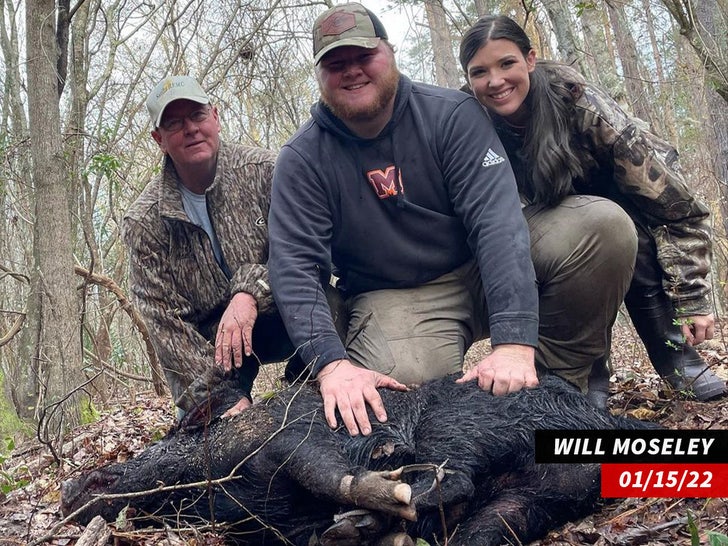
Instagram/@willmoseleymusic
But, Cameron Hanes is saying viewers need to look beyond the vid … and understand this is simply the hunter’s way.
May 5, 2024 — 7.30pmSave
ShareNormal text sizeLarger text sizeVery large text size
Advertisement
Listen to this article
6 min
Australia is the last continent free from a virulent strain of bird flu that has killed an unprecedented number of animals, led to the culling of half a billion poultry birds and sparked “enormous concern” within the World Health Organisation about a leap into humans, after a Texan man fell ill with the virus.
Speculation that the problem variant, called clade 2.3.4.4b, has spread between cows in the US has sparked fear the disease is getting closer to posing a serious pandemic threat to humans.
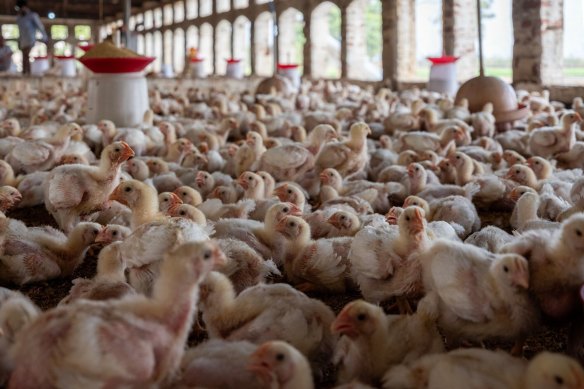
The risk of the virus gaining the ability to spread between people is very low, but the scenario could be devastating. Based on 889 human infections since 2003, the disease has a 52 per cent mortality rate.
“For some reason, in the last five years [avian flu] has become supercharged,” Professor Michael Ward, chair of Veterinary Public Health at the University of Sydney, said. “It’s exponentially increased in terms of these spillover events and the dynamics of it have certainly shifted up a gear.”
Spillover events refer to when a virus leaps between species.
A mild form of bird flu circulates naturally in waterfowl, mostly ducks and geese. But when this low pathogenic form of the virus infects domestic poultry flocks it can mutate into a deadly, highly pathogenic version of the virus and spill back over into wild birds.
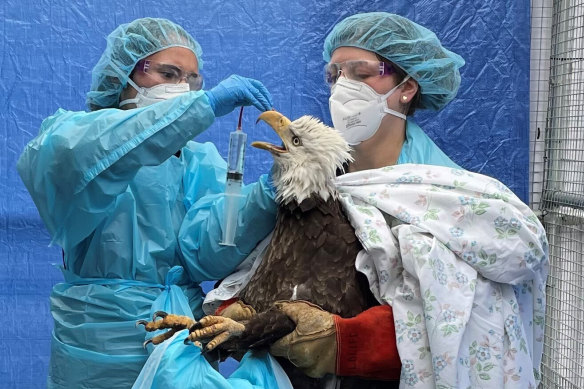
Clade 2.3.4.4b probably emerged in this way in 2021 and now the world is in the grip of a bird flu panzootic – an animal pandemic.
Advertisement
Scientists have reported horrific scenes of South American beaches littered with the bodies of 17,400 elephant seal pups. The virus has killed polar and grizzly bears, decimated Peruvian pelican populations and infected bottlenose dolphins, lions and skunks.
The virus has ripped through the world’s largest northern gannet colony in the UK, killing 70 per cent of the population and turning survivors’ eyes from blue-white to black. Scientists don’t know why.
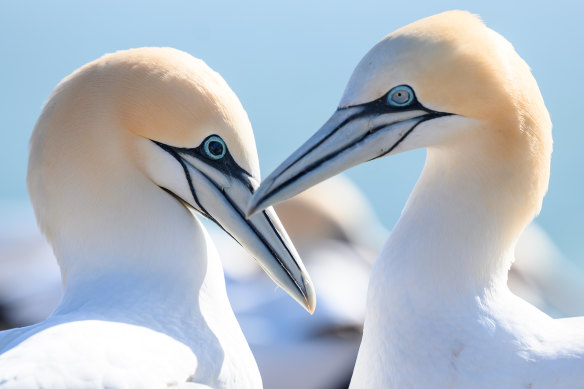
And, for the first time, bird flu has spread to Antarctica, where it could have a catastrophic effect on penguins and seals.
“These viruses seem to now be jumping into mammals and back into birds, which we haven’t really seen before,” Ward said. “The more often that happens, the more likely it is that at some point, these viruses are going to start picking up undesirable characteristics that then would allow them to transmit from human to human. The cattle example in the US is sort of going down that path.”
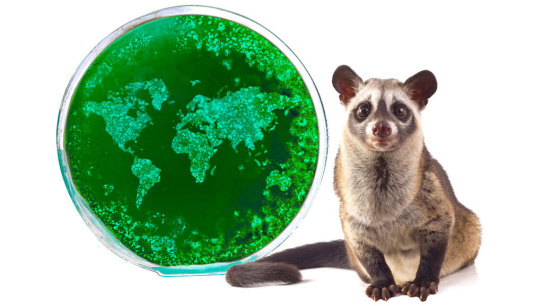
On March 25, US officials announced the virus had infected a herd of dairy cows in Texas, the first cases of avian flu in cattle. A month later, at least 34 herds across nine states were sick with the flu.
New genomic analysis shows the strain was circulating undetected in cows since early January and may have gained at least one adaption linked to viral spread in mammals.
Amid the cow outbreak, a dairy farmworker fell ill with the virus which, unusually, manifested as conjunctivitis. The strain was not one that could pass on to another person and the man recovered.
But the incident prompted WHO’s chief scientist, Dr Jeremy Farrar, to say he held enormous concern about a scenario in which the virus “evolves and develops the ability to infect humans and then, critically, the ability to go from human to human”.
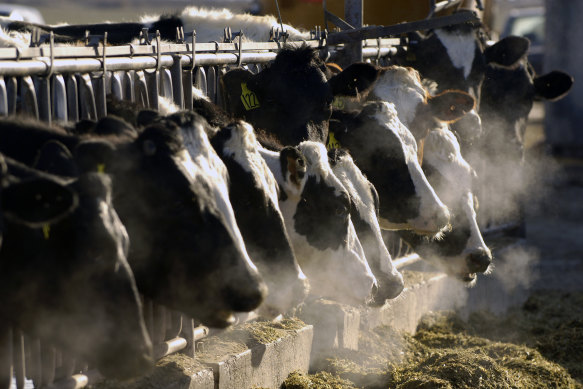
Infection in pigs could be particularly dangerous because they’re “mixing vessels” that can catch strains of human and bird flu, Ward said.
In a coinfected pig, “one virus could pick out characteristics from the other,” Ward said. “That sort of situation can set up one of these super viruses that has that ability to transmit much more easily.”
Despite the concern, humans are still a “dead end” host for bird flu. The virus has never achieved sustained transmission between humans and it remains a bird-adapted disease, said Dr Frank Wong, a bird flu expert for WHO from the CSIRO’s Australian Centre for Disease Preparedness.
“There’s still no conclusive evidence that cattle were spreading it to each other through a respiratory infection,” Wong said. “When you sample the cattle, the viral load is mainly in mammary glands, the udders and in milk, and not in the respiratory tract of cows.”
The virus may have spread between cows through unsterilised milking equipment or feed, not in an airborne manner like COVID-19, limiting its potential to take off as a human pandemic.
Australia remains a hold-out for the disease, Wong said, because of strict biosecurity laws and the fact the continent isn’t a major stopover for the species of migrating ducks and geese that carry the virus. But a Department of Agriculture, Fisheries and Forestry report recently upgraded the risk of highly pathogenic bird flu arriving in Australia to high. The report said migratory shorebirds, shearwaters and nomadic waterfowl were species that could bring the virus to Australia.
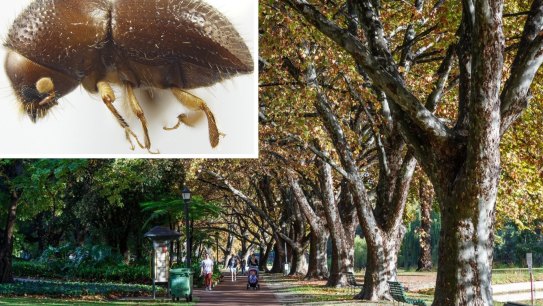
The first sign of the disease here, Wong said, would probably come from a mass die-off of wild birds or from a suddenly ill backyard chicken flock. Detection of the virus in poultry would trigger a swift “stamping out” measure, or culling of affected flocks, which is how authorities stamped out eight previous outbreaks of the disease.
DAFF investigates mass bird die-offs and also conducts general surveillance of wild bird faeces to test for the virus’s presence. Wong’s lab checks if positive samples are of the exotic, problem variant or the low pathogenic strain that naturally circulates.
The clade behind the latest worldwide outbreak has never been detected in Australia.